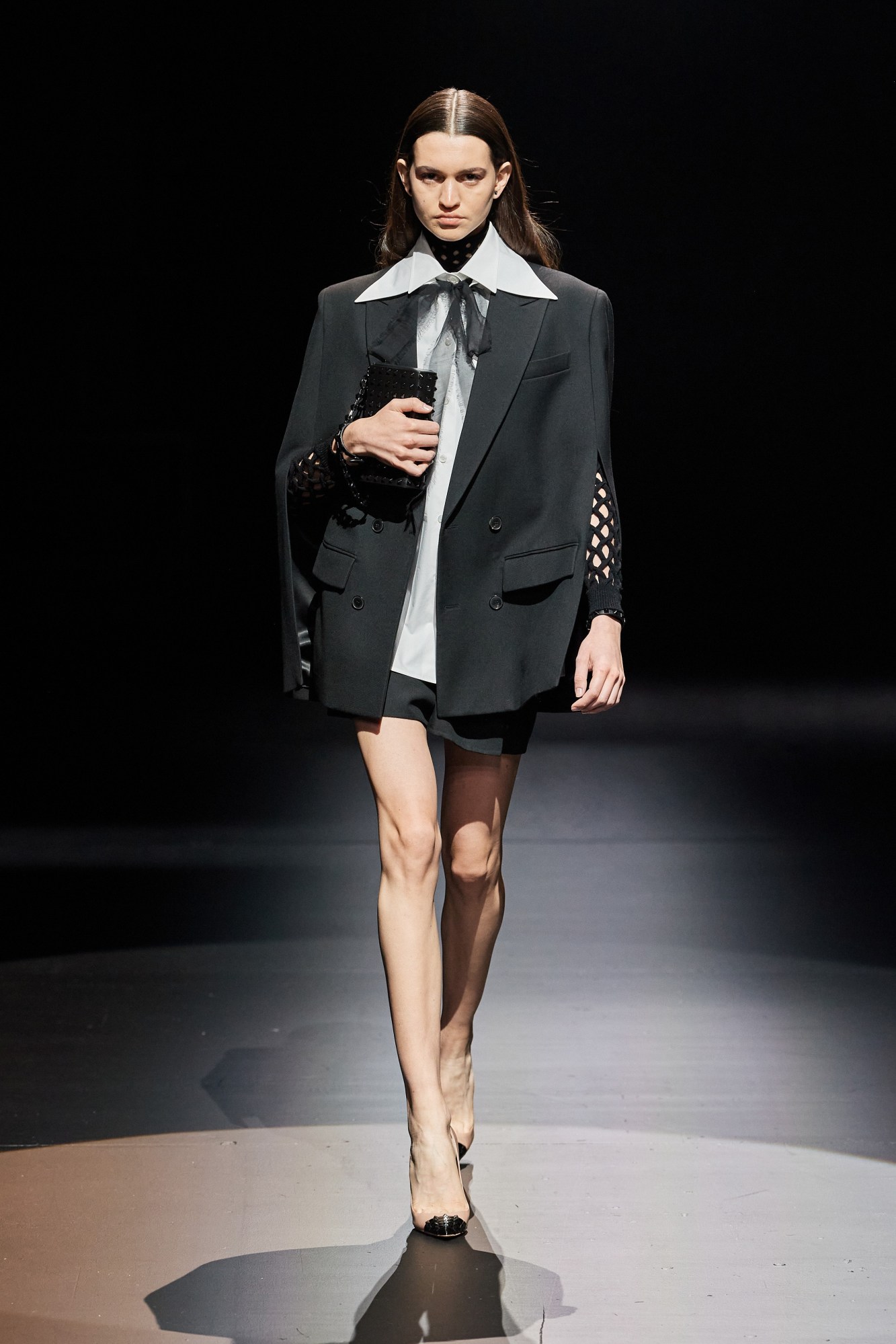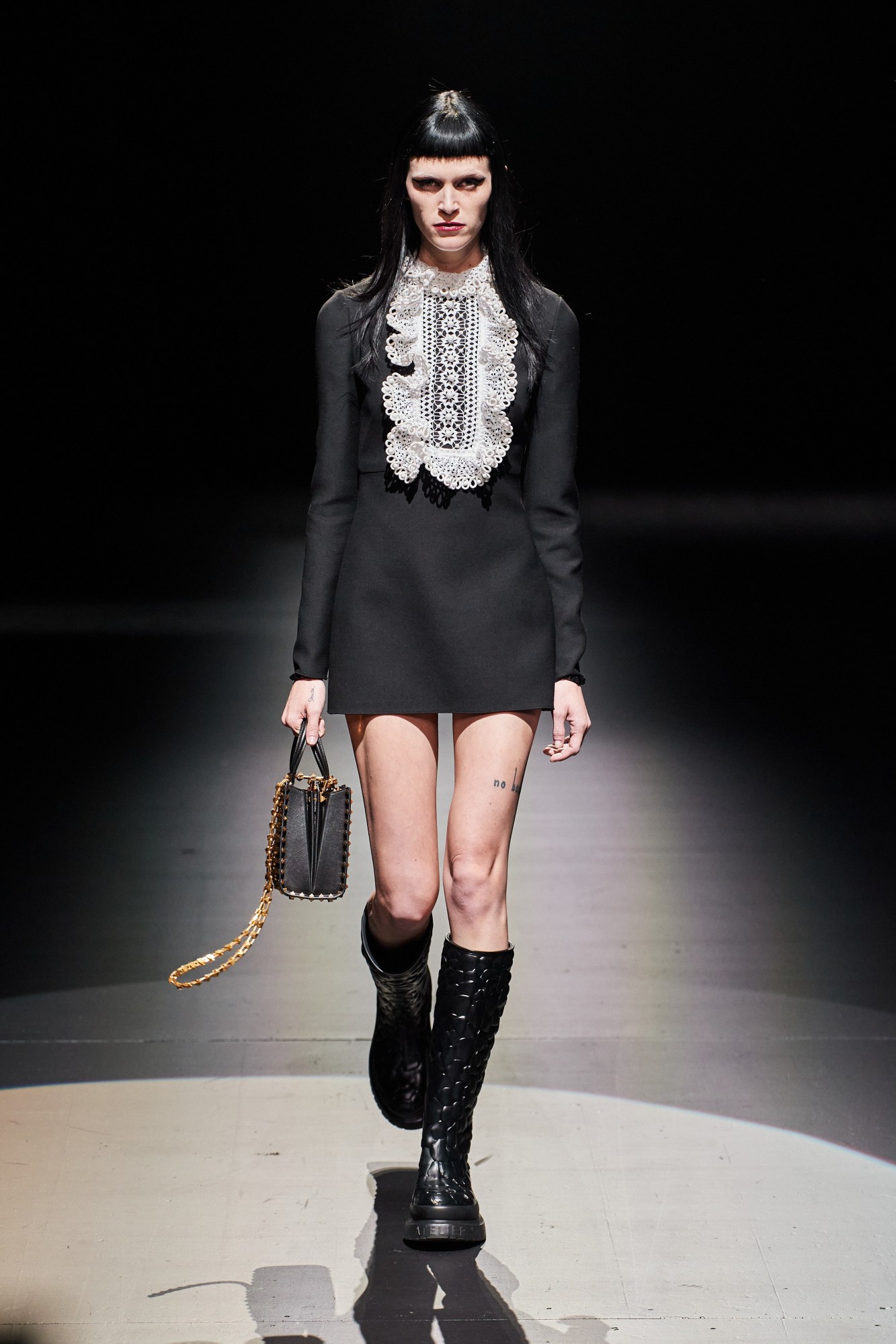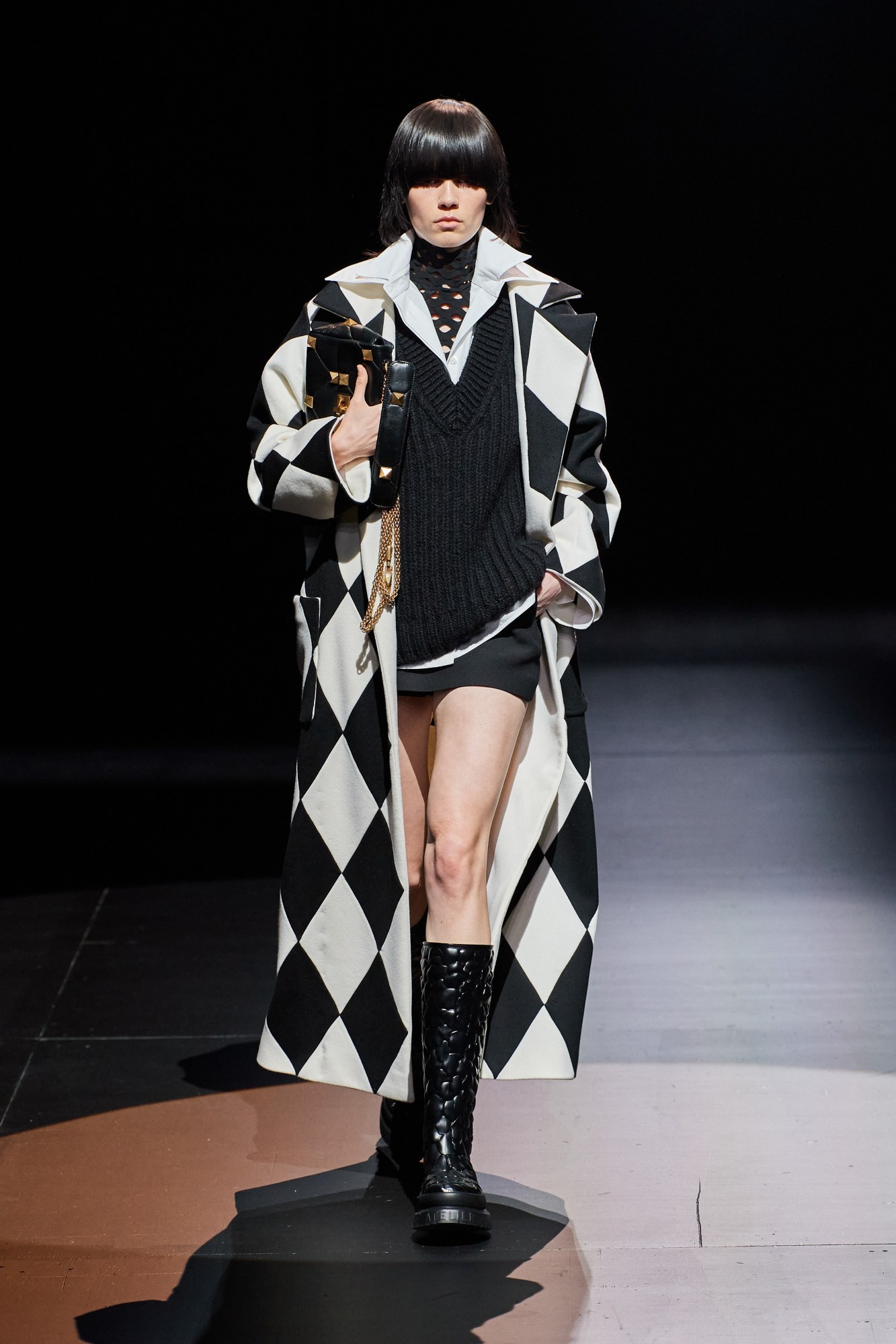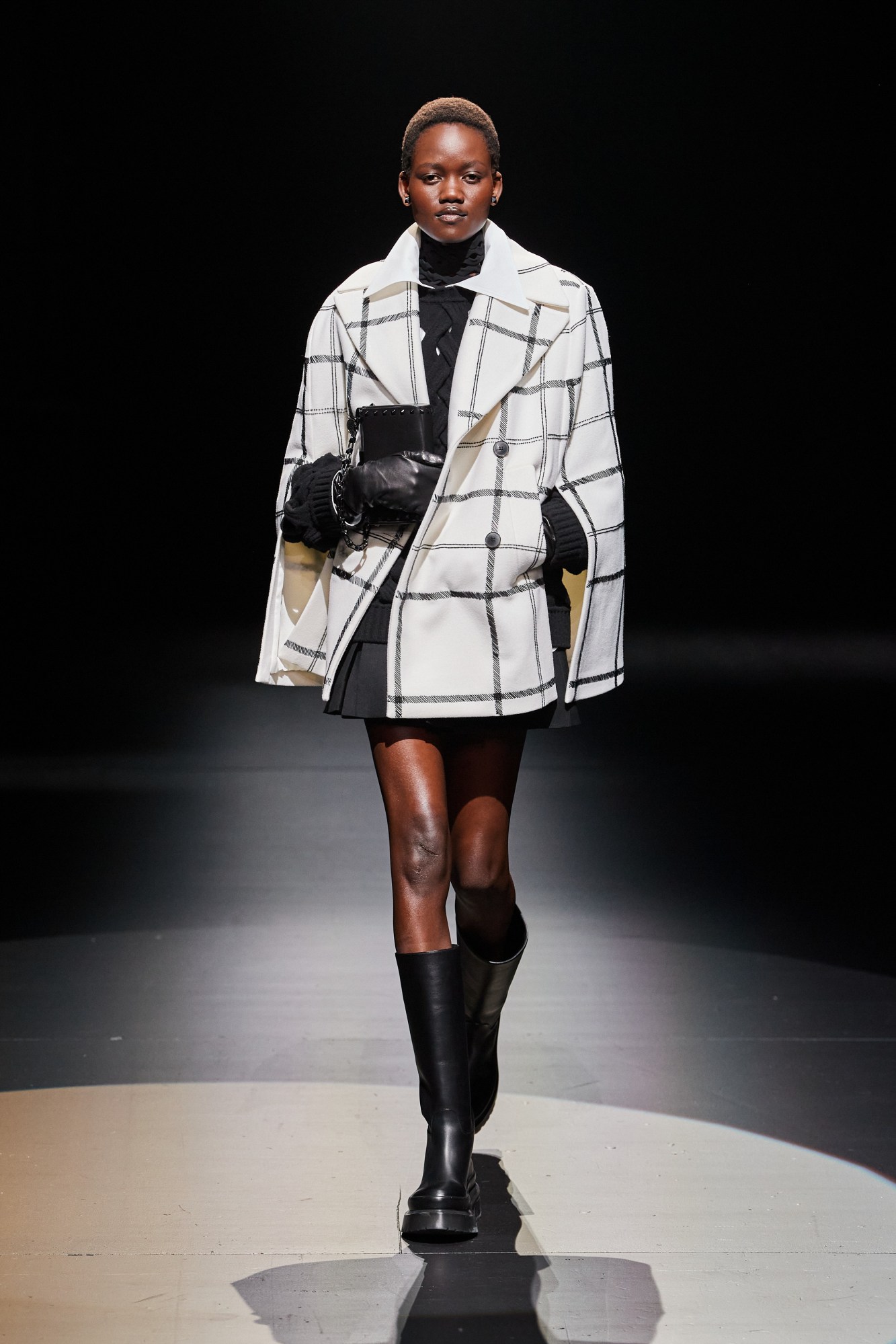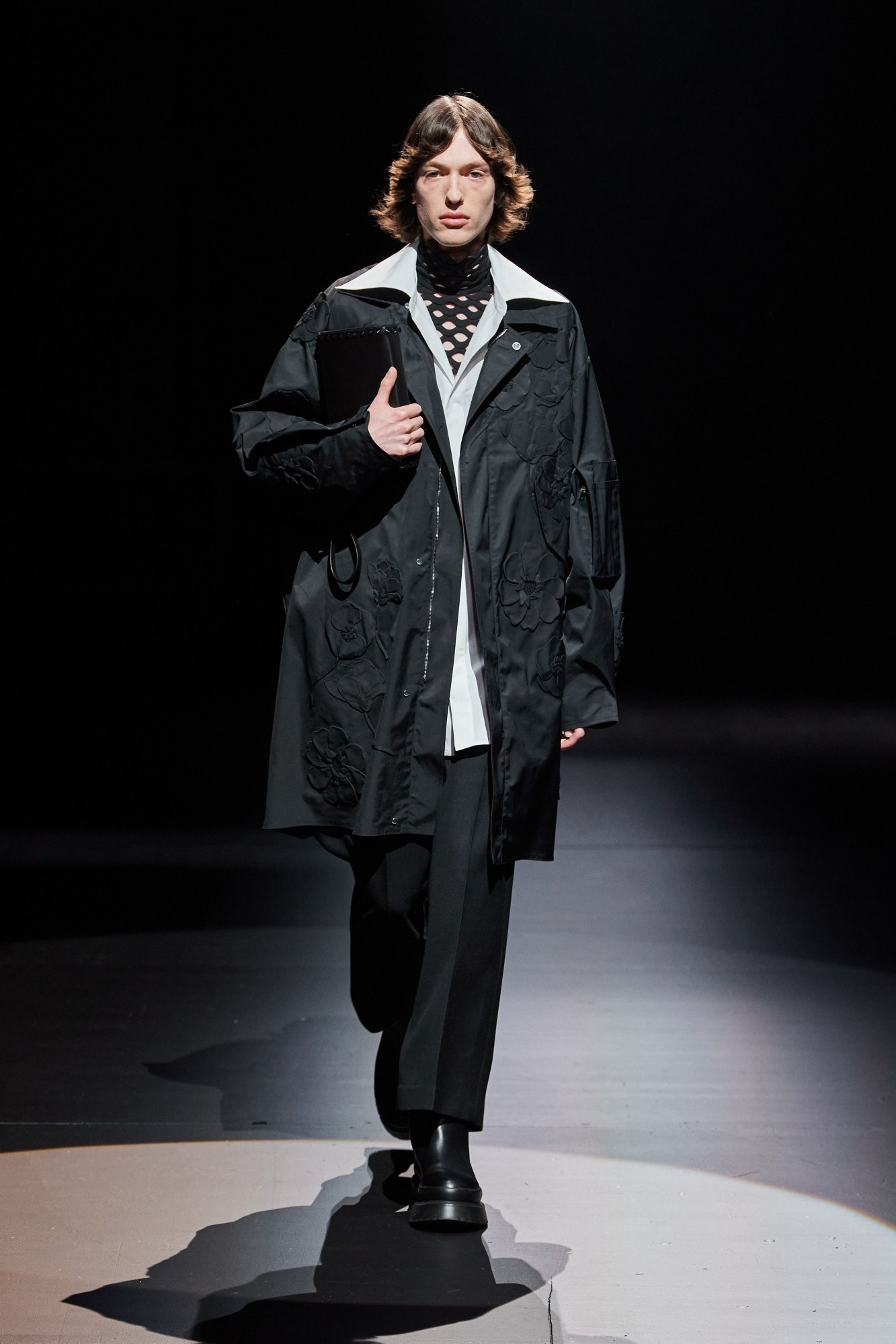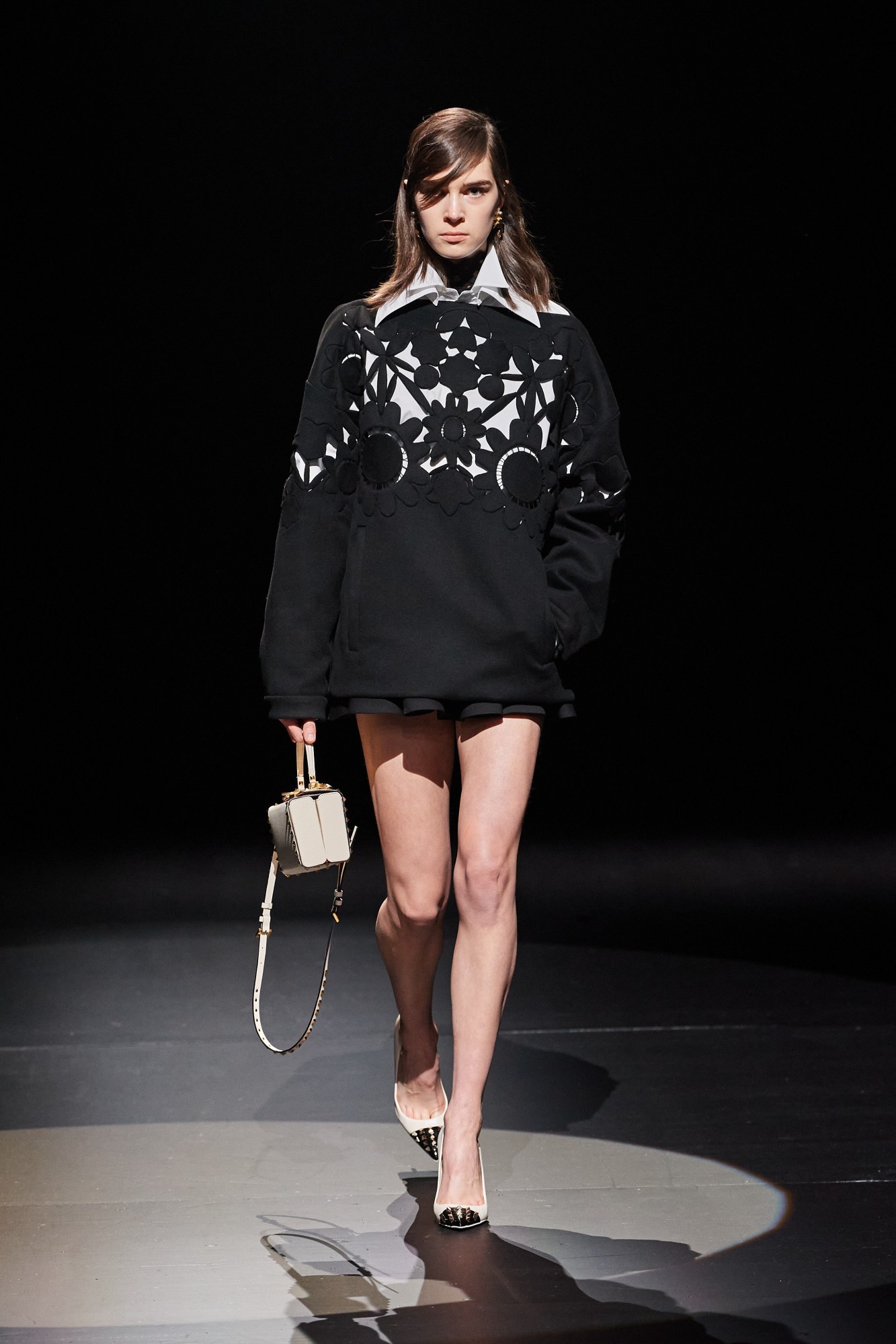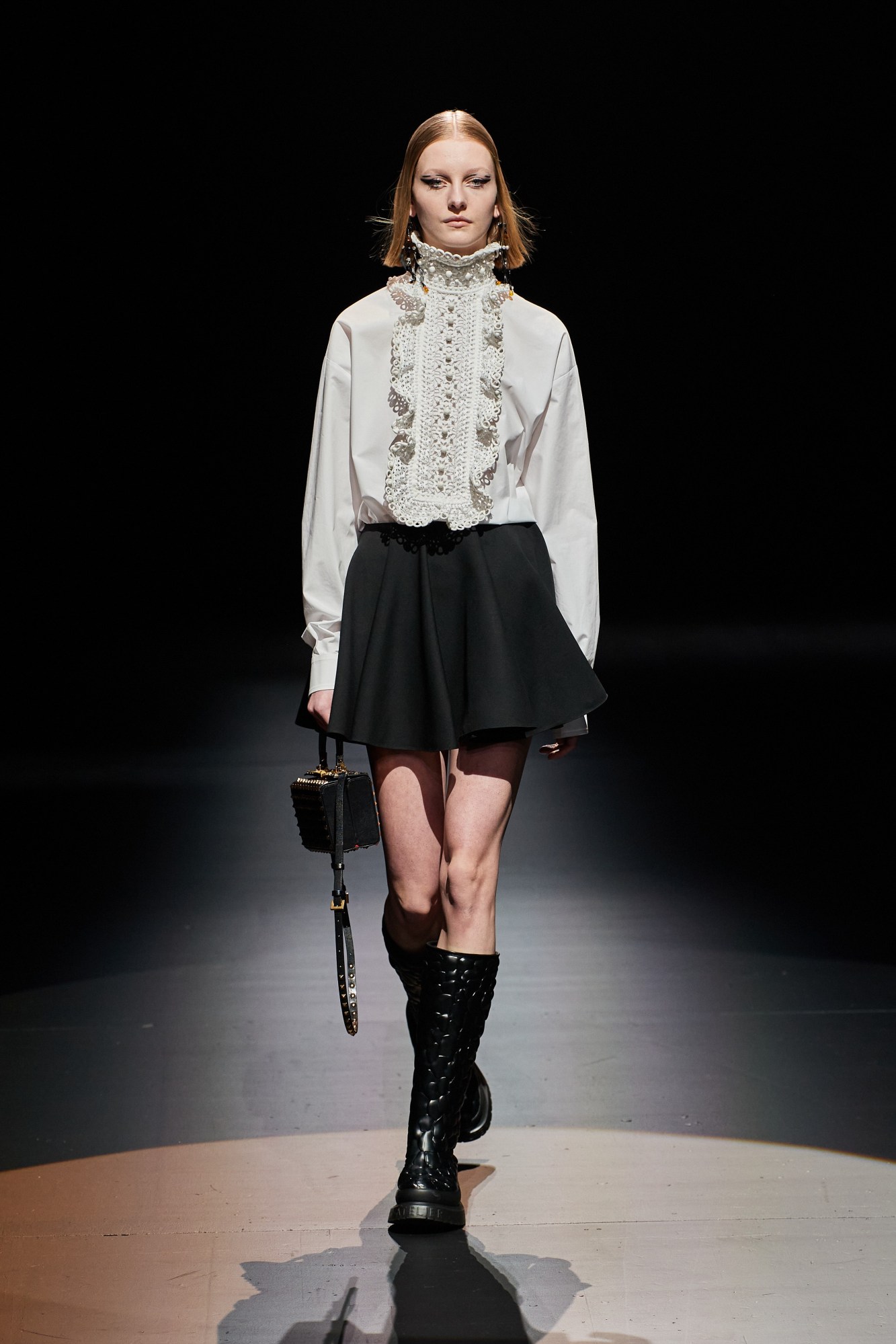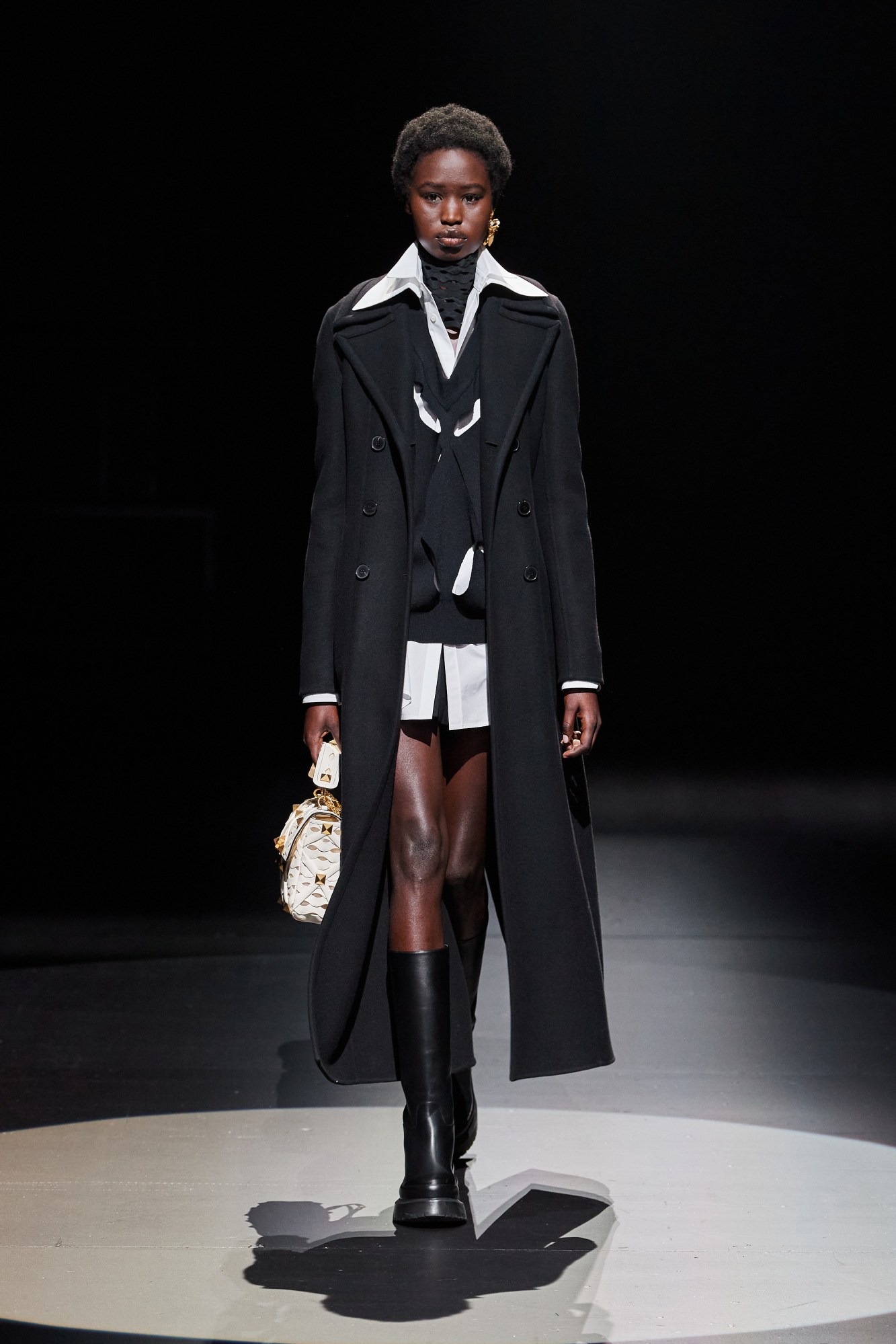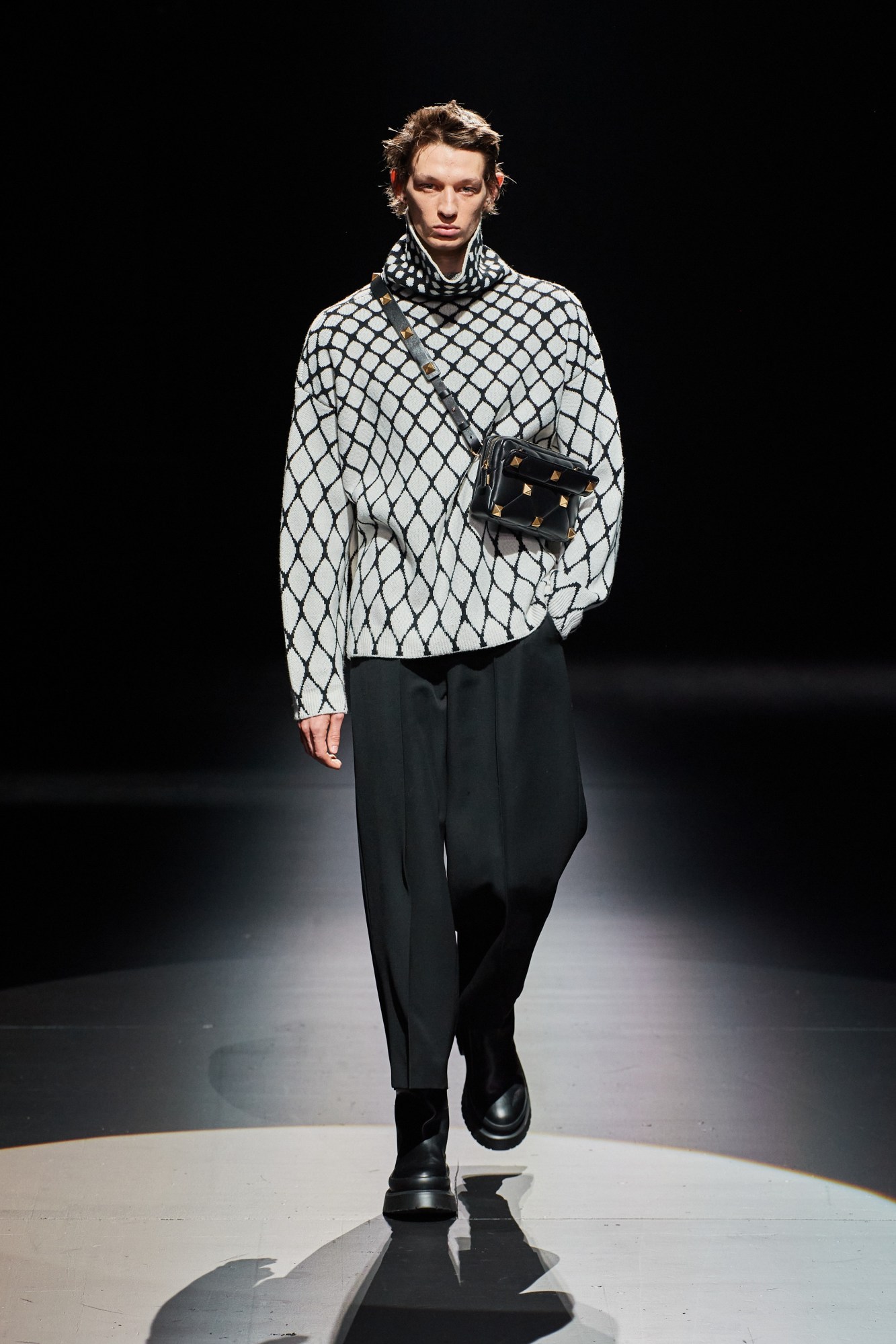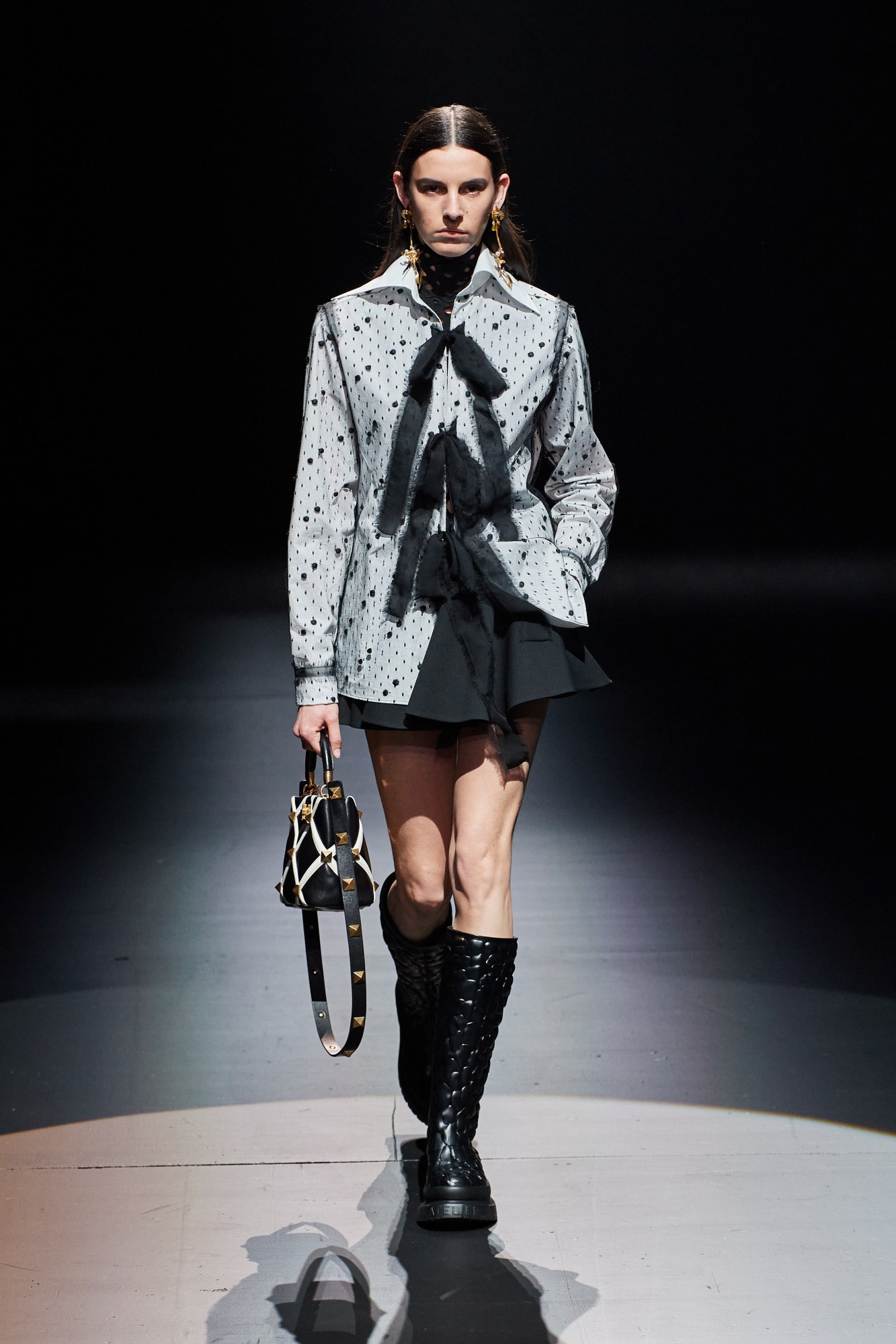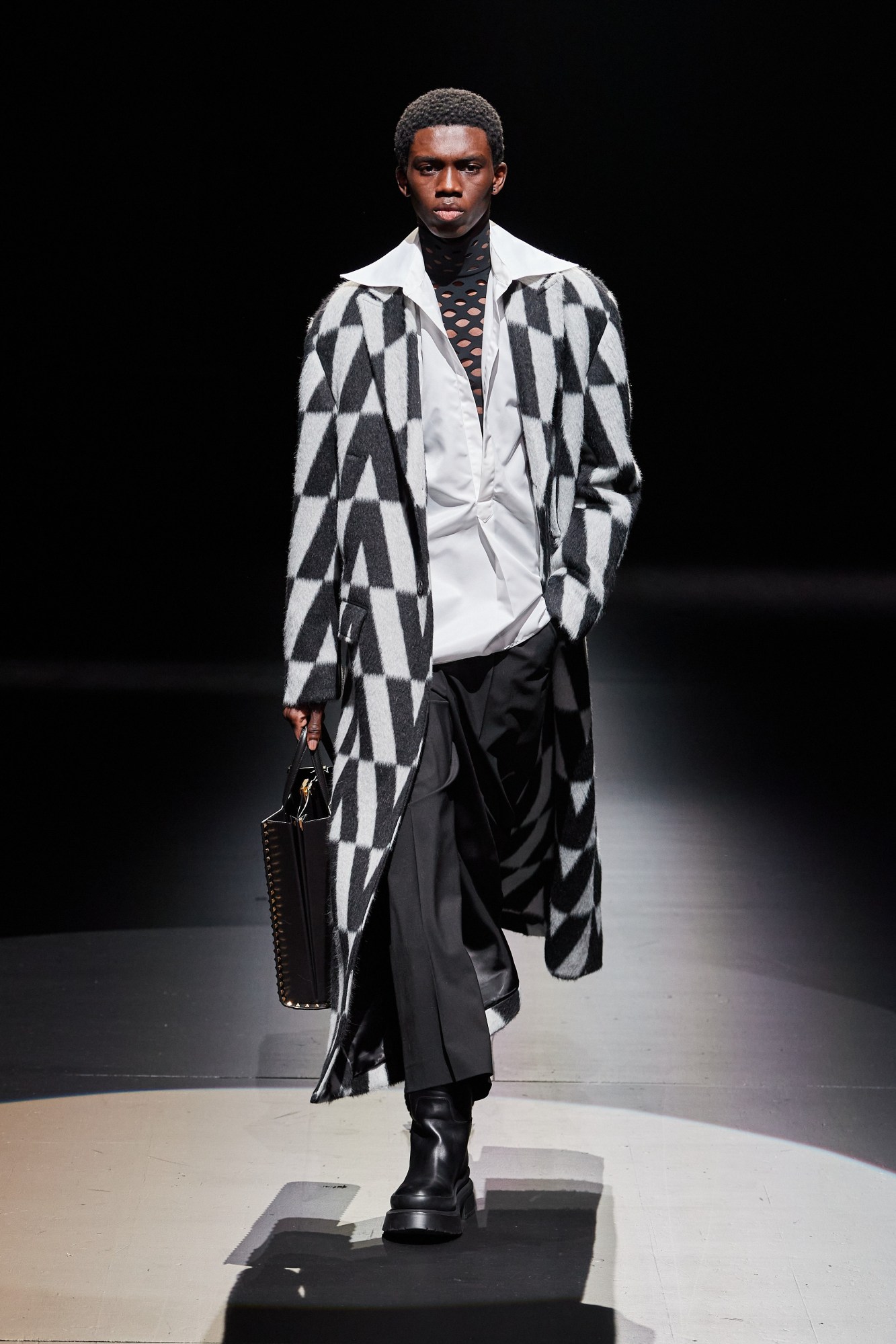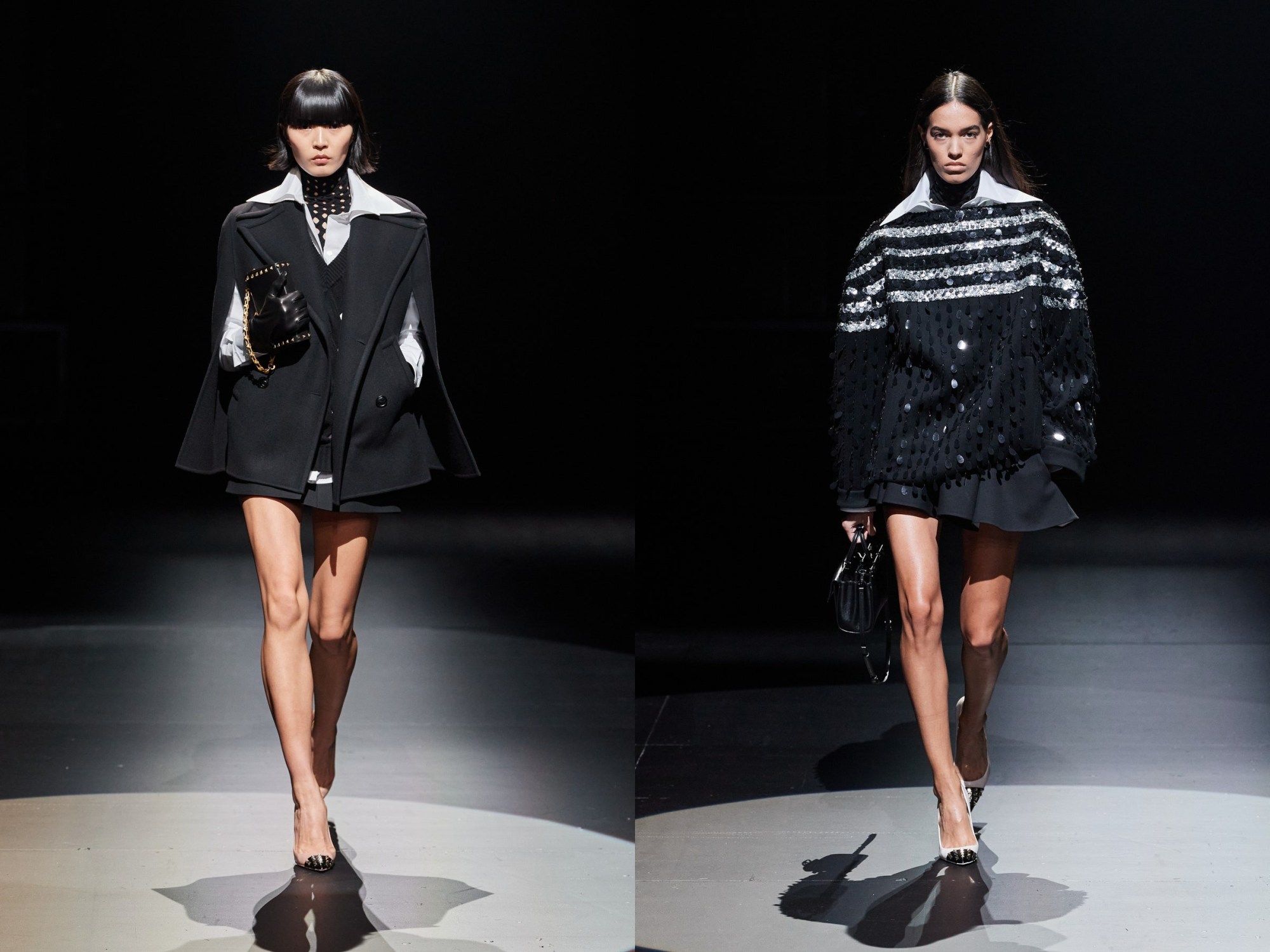What happens when all this is over? It’s a question that designers can’t help but exploring, whether it’s reflecting the reality of these doldrums or creating glittering distractions from it. The AW21 Valentino show was perhaps Pierpaolo Piccioli’s darkest yet. In a literal sense, the collection was almost entirely rendered in sombre black and set under a dramatic spotlight in the empty auditorium of the historic Piccolo Teatro di Milano, which has been closed since the beginning of the pandemic. The Milanese symphony orchestra played in the background, with London-based chanteuse Cosima crooning ‘Nothing Compares 2 U’ in the background. The mood was austere, perhaps even funereal — we’re living in dark times, after all. But, any kind of sobriety in ambience was quickly dispelled by abbreviated silhouettes, miniskirts so short that the plethora of cocoon-shaped capes, shirts and sweaters suddenly seemed like exaggerated dresses.
Valentino’s show notes put it bluntly: “Pierpaolo Piccioli makes an authentic fashion gesture and brutally shortens everything… The blade acts without any hesitation: with inexorable urgency.” These are lengths not seen since the days of Paris and Nicole — or Jean Shrimpton and Twiggy before them. As the world is in crisis and most of our legs have been submerged by jersey trackies, what could be more transformative than stepping a well-oiled leg into a new era?
This was an act of fashion: a radical new silhouette. Once upon a time, there was a correlation between hemlines and stock market figures: skirts go up, so does the economy. But that was then. Today, the narrative of miniskirts has shifted, not just in terms of sartorial symbolism, but also in terms of cultural narrative. Consider the gross “up-skirting” phenomenon of 2000s paparazzi shots — highlighted recently in the Framing Britney Spears documentary — or the archaic notions of female sexuality being equated to sluttiness in courtrooms and campus offices, as seen in Promising Young Woman.
Pierpaolo is a self-described romantic designer, which you can tell by his emphasis on humanity and his spellbinding Valentino couture shows. He believes in the fashion fairy-tale. And whereas his signature Valentino dresses have always been long, some even trailing metres of sumptuous fabric, this was a bold move within the Valentino universe that signifies a new kind of romanticism, a harmony of sexuality and sensuality. “Sensuality as an attitude,” read the show notes. “An awareness of the body that does not deny romanticism but radicalises it in a libertarian instant.” In other words, the miniskirt is getting its moment again, this time without any of the sexist discourse.
Elsewhere, there were punk and grunge motifs that reiterated the radical-themed spirit of the show, albeit in the finest Italian fabrics. Studs and fishnets were recurring themes, transfigured into latticework sweaters, ladylike pumps and stomping boots. Barely-there lace dresses, elegantly oversized tailoring and an array of statement sweaters — some with feathers, others with sequinned stripes and some with spliced cut-outs — were the key pieces. The co-ed collection also featured menswear, which for the most part echoed the wide-collared shirts and trophy jackets of the womenswear with abbreviated trousers. They skimmed the ankle instead of the crotch. Ultimately, the success of the show was in the classicism of the pieces — these were very archetypal garments, after all — re-energised in stark black-and-white and radicalised by those super-short lengths. As the models stepped out from the darkness into the bright spotlight, the symbolism was not lost, even without an audience. After a year of darkness, we’ll eventually re-emerge into the light — and so will our legs.
